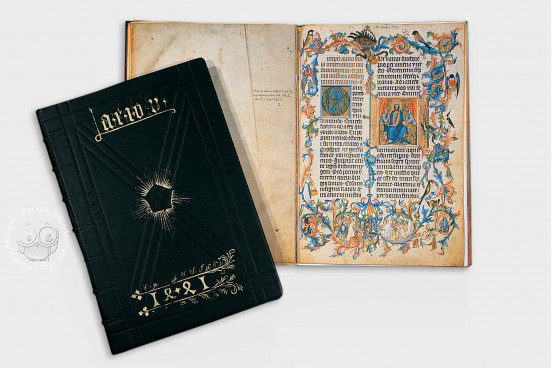This manuscript in the Österreichische Nationalbibliothek is one of the copies of the Golden Bull, named after the golden seal it carried, a copy that was made in Prague in the year 1400. The original document was promulgated in 1365 by Emperor Charles IV to regulate the system of election of the German Emperor. With the agreement of the diets in Nürnberg and Metz, the Golden Bull established the process of imperial election in details and defined procedures that remained active up to 1806.
A Prominent Document of Constitutional Law
The son of the Emperor Charles IV, King Wenceslas IV, commissioned this luxurious copy of the Golden Bull to be made at the court in Prague. The lavish manuscript contains additional texts to the Golden Bull promulgated by Charles IV. This codex also includes a treatise on the best time of warfare in the Italian country, a letter written by king Wenceslas on his succession of his father Charles IV, and a section on the towns and castles in Tuscia (modern Tuscany).
The relevance of the codex consists of the political value of the manuscript, especially because it provides evidence that this copy was made in the library of the king Wenceslas, the scriptorium that also produced the oldest German book of the Bible. There was a clear political reason behind the production of this refined codex of the Golden Bull: it was meant to legitimate Wenceslas' claim to the kingship that he had just lost, and constituted an official document in the discussions with the Pope concerning the coronation of the German emperor in Rome.
A Luxury Version of the Golden Bull
Forty-eight illuminations and a great number of decorated initials ornate the codex. The refined miniatures have been attributed to a single illuminator whose identity is not better defined than the Master of the Golden Bull. The illuminator represented scenes of the election of the emperor as explained in the bull. The figures occupy the pictorial space over a background embellished with either color or gold leaf.
The illuminations are executed in the Bohemian style of the fifteenth century; characteristics of the illuminator's style are the curly hair and projecting noses of the figures. Acanthus leaves and foliate motifs adorn the borders of the pages. The chapters and relevant paragraphs are marked by historiated or decorated initials, with use of gold and interlace.
We have 1 facsimile edition of the manuscript "Golden Bull": Die Goldene Bulle facsimile edition, published by Akademische Druck- u. Verlagsanstalt (ADEVA), 1977
Request Info / Price
